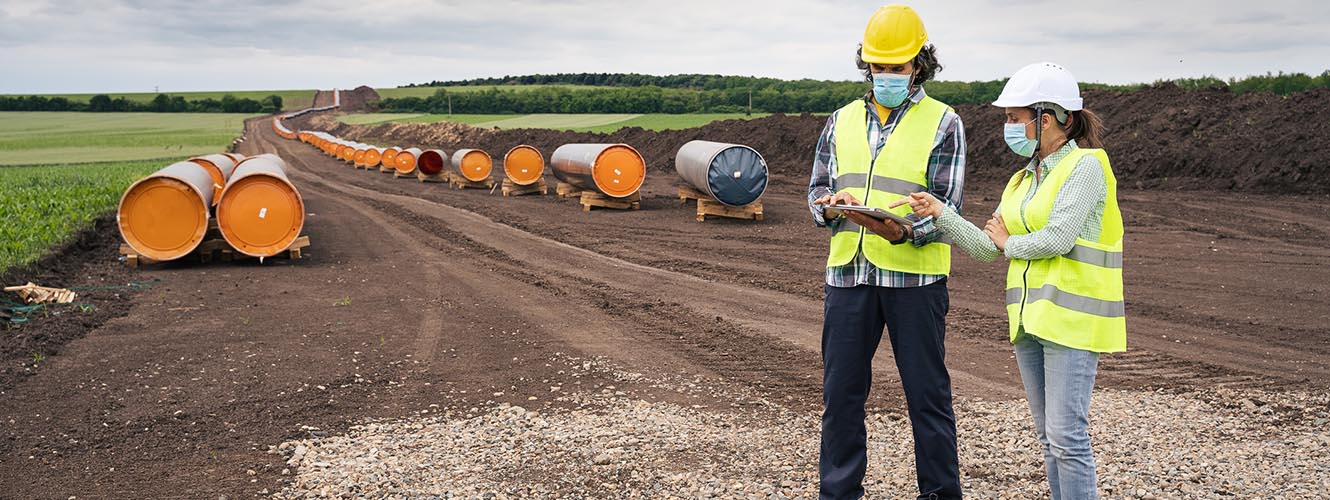
Guy Hemsley has been in the property industry, specialising in utilities, for more than 17 years. He is responsible for the day to day management of the Esso pipeline contract and oversees a Fisher German team of more than 20. Here, he outlines his day to day role – and highlights one very unusual project!
Most people are well aware of the progress of HS2 as it links London to Birmingham – in contrast, the UK’s biggest engineering project of this century is hidden underground. As the Pipeline Manager for Fisher German, I oversee the day to day management of our partnership with Esso Petroleum Company Ltd, working on its fuel network which consists of pipelines emanating from Fawley in Hampshire delivering fuel to Purfleet, Avonmouth, Birmingham and West London.
The network carries only refined fuels pumped at very high pressures predominantly underground. The oldest one we manage was built in 1961 and the most modern is the link to Birmingham Airport which was installed in 1991.
These are strategic pieces of infrastructure and the country is highly dependent on the network. While the UK has impressive targets to achieve Net Zero in the coming years, we are still heavily reliant on these fuels for the time being. For example, Heathrow Airport, when it is functioning at normal levels, needs 18 million litres of fuel a day!
Our challenge in the industry is therefore to transport the fuel around the country in the safest and most environmentally friendly way possible to allow society to function smoothly. If you put that amount of fuel into tankers, there would be all sorts of issues around congestion, environmental impact and costs, so pumping underground in high volumes is the answer.
At Fisher German we are the eyes and ears on the ground for our clients. Working closely with local landowners is an important part of the job and our team prioritise building relationships with individuals and organisations affected by the apparatus. It is also essential to remind landowners, contractors and organisations of the safety measures and key information. We have bespoke systems in place to highlight any changes in ownership so that we can speak to new owners and outline the essential safety information and how we can work with them.
There is an easement in place which ensures we have control over any work which goes on within three metres the pipeline. Any work that takes place within this boundary or deeper than 300mm must be supervised by one of our pipeline field technicians. The type of work can range from simple service crossings by utility companies and landowners to major developments, which require close liaison to ensure that the pipelines are protected and not compromised.
Day to day agricultural work such as standard cultivations are permitted, but drainage works, mole draining and subsoiling must be supervised. Of course, dealing with HS2’s impact on the pipeline has been slightly more involved!
HS2 started in 2012 and the lawyers thrashed out a pipeline protection agreement early on but it really ramped up in 2019 when we had to start work to divert the pipeline away from the planned HS2 route. The pipeline to the south of Birmingham lies where the portal building for the main tunnel in and out of the city is to be situated. We had to shift a 500 metre section of pipeline to accommodate the building and all the associated works.
We kicked off in late 2019 with the ecology surveys, digging of trial holes to locate a high-pressure gas pipeline and some 132kv electricity cables, which had to be avoided. The area was covered by a thicket which had to be cleared and we started onsite in January 2020.
While the work is of the utmost importance and is hugely tested, monitored and supervised, it is, in theory, straightforward. You construct a new section of pipeline which is delivered to site and strung out along the new route. It is then welded and dropped into a trench. The new section is tested and then the existing pipeline is shut down, cut into and two “golden welds” join it up the new section. The welds are x-rayed, and everything is tested again before the pipeline is reactivated.
It sounds simple – but a 500-metre diversion costs around £2.5million and there will be tens of thousands of utility diversions – albeit not as costly as this – up and down the HS2 route.
The work, on this and other pipeline projects, has been one of the big growth areas for Fisher German in recent years. When I joined Fisher German 13 years ago, there was only me and another land agent, two support staff and five technicians out in the field. Now we employ 13 technicians, three land agents, a repairs agent, a landowner liaison officer, repairs administrators and wider support staff, so we are big team – and we plan to keep building!





